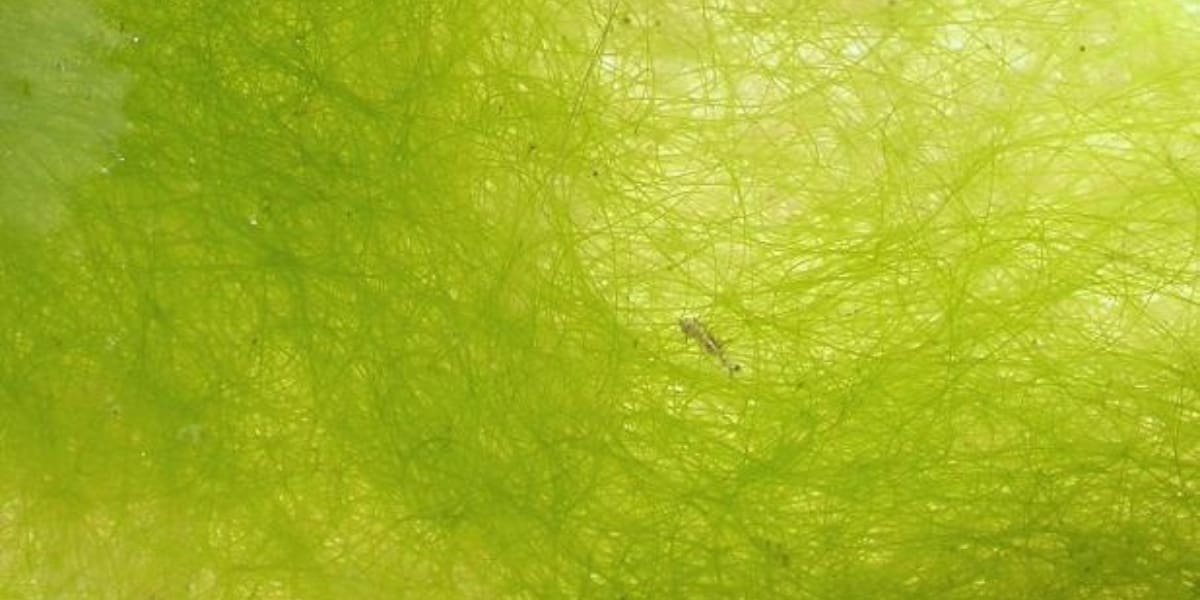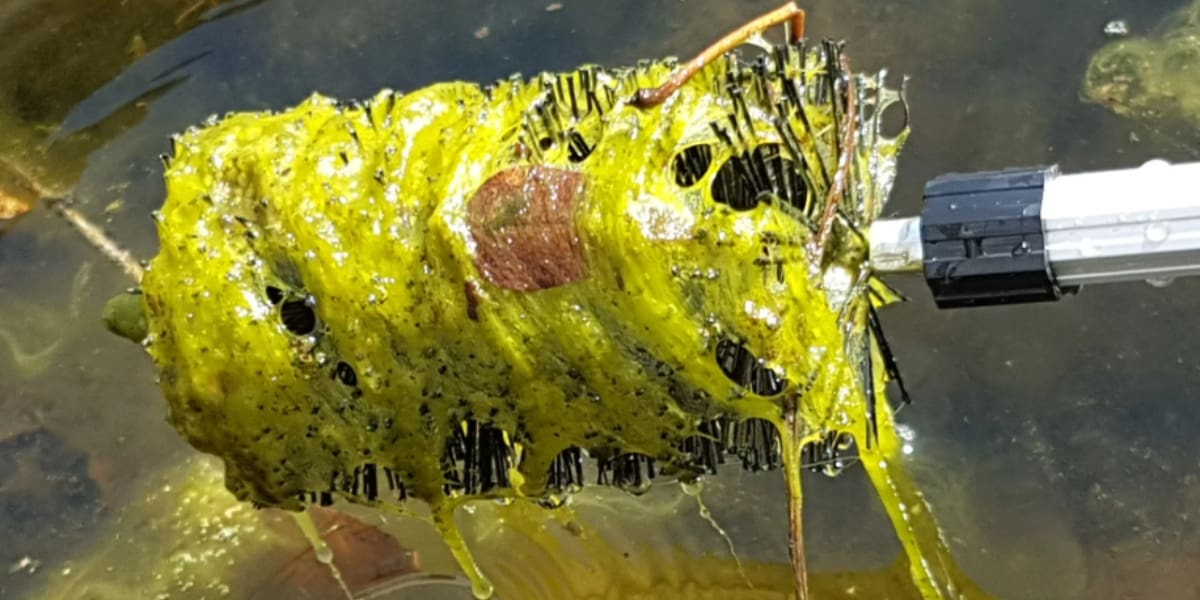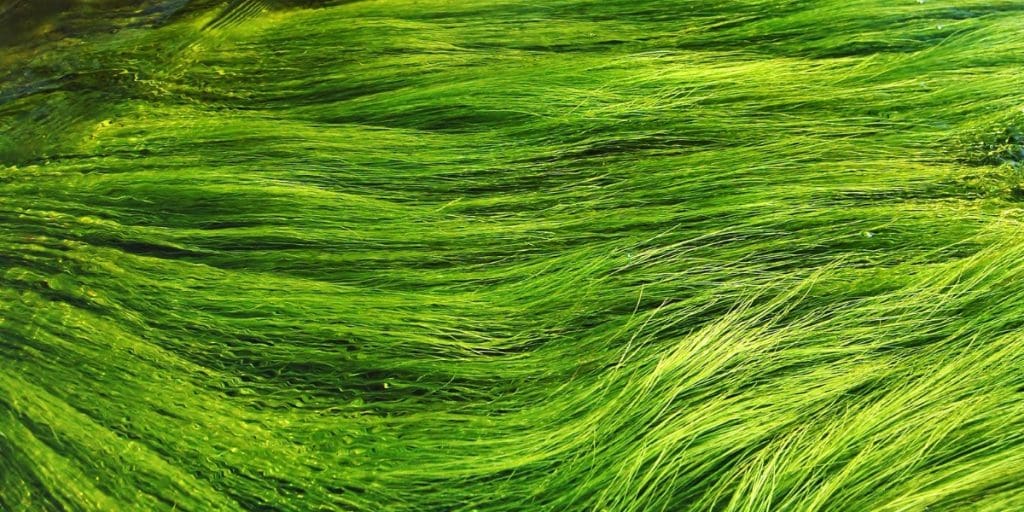String algae in your koi pond can be a frustrating and unsightly problem. Not only can it make your pond look unattractive, but it can also harm your koi. String algae can deplete oxygen levels in the water, which can be dangerous for your fish. Fortunately, there are steps you can take to get rid of string algae in your koi pond.
If you want to know how to easily get rid of string algae in your koi pond, the first step is to physically remove it from your pond. This can be done by scooping it out with a net or by using a pond vacuum. Once you have removed the visible algae, it’s important to address the underlying issue. String algae typically grows in ponds with high nutrient levels, so it’s important to reduce the amount of nutrients in your pond. This can be done by adding beneficial plants to your pond, which can compete with the algae for nutrients.
How to easily get rid of string algae in your koi pond?
When it comes to getting rid of string algae in your koi pond, there are a fundamental steps to keep in mind:
By keeping these fundamentals in mind and staying on top of regular maintenance, you can effectively get rid of string algae in your koi pond and keep it from coming back.
Understanding String Algae


String algae is a common problem in koi ponds and can be a nuisance for pond owners. It is a filamentous plant species that can quickly grow and take over your pond. String algae can attach itself to rocks, plants, and other algae, making it difficult to remove.
String algae is bad for your koi pond because it can cause a variety of problems. Firstly, it can block the sunlight, which can prevent the growth of beneficial plants and algae. Secondly, it can absorb nutrients that are essential for the growth of other plants and algae. Lastly, it can release toxins into the water, which can harm your fish.
To control string algae in your koi pond, you need to understand what makes it worse. String algae thrives in water that is high in nutrients, such as nitrogen and phosphorus. If your pond is overstocked with fish or if you are overfeeding them, this can lead to an excess of nutrients in the water, which can promote the growth of string algae.
Adding beneficial plants to your garden pond can also help to control string algae. These plants can compete with string algae for nutrients and can help to keep the water clean. Some beneficial plants that you can add to your pond include water lilies, water hyacinths, and water lettuce.


Get the Information You Need!
Join Us and Ask an Expert
Preventing String Algae Growth
String algae can be a nuisance in your koi pond, but preventing its growth is possible with proper maintenance and care. In this section, we will discuss two important sub-sections that will help you prevent string algae growth in your koi pond.
Maintaining Water Quality
Maintaining water quality is crucial in preventing string algae growth. Here are some tips to keep your water quality in check:
- Test your water regularly to ensure that pH and phosphorous levels are within the appropriate range.
- Keep your pond clean by removing debris, dead leaves, and other organic materials that can contribute to algae growth.
- Install a pond filter to help remove excess nutrients from the water.
- Ensure proper oxygenation of the water by adding aeration devices.
Balancing Pond Nutrition
Balancing pond nutrition is another important factor in preventing string algae growth. Here are some tips to help you balance your pond nutrition:
- Avoid overfeeding your koi. Excess food can lead to excess nutrients in the water, which can contribute to algae growth.
- Use a high-quality fish food that is designed for koi.
- Add beneficial plants to your pond. These plants can help absorb excess nutrients and compete with string algae for resources.
- Use a pond conditioner to help balance the pH levels in the water.
By maintaining water quality and balancing pond nutrition, you can prevent string algae growth in your koi pond. With proper care and maintenance, you can keep your pond healthy and beautiful for years to come.
Identifying String Algae


If you have a koi pond, you may have encountered string algae. This type of algae can quickly become a nuisance and cause harm to your fish. Identifying string algae is the first step to getting rid of it. Here are some characteristics of string algae:
- Appearance: String algae looks like green hair or threads that can grow up to several feet long.
- Texture: It has a slimy texture and can feel slippery to the touch.
- Location: String algae can attach to rocks, plants, and other algae in your pond.
- Growth: It can grow quickly and become overgrown, covering large areas of your pond.
- Color: It is usually green, but can also be brown or black in color.
If you notice any of these characteristics in your pond, it’s likely that you have string algae. It’s important to take action quickly to prevent it from spreading and causing harm to your koi. In the next section, we will discuss how to get rid of string algae in your pond.
Manual Removal of String Algae
The most effective way to get rid of string algae in your koi pond is to manually remove it. This method involves physically pulling out the algae from the water by hand or with a tool. Here are some tips to help you manually remove string algae from your koi pond:
- Wear Protective Gear: Before you begin, make sure to wear gloves and protective clothing to avoid skin irritation. String algae can be sharp and scratchy, so it’s important to protect your skin.
- Use a Pond Rake: A pond rake is a useful tool for removing string algae. Simply drag the rake through the water and pull out any algae that gets caught in the tines. Be careful not to damage any plants or disturb the pond bottom.
- Pull It Out By Hand: If the string algae is growing in a small area, you can simply reach in and pull it out by hand. Grab the algae close to the base and pull it out firmly. If the algae is long, you can wrap it around your hand to make it easier to pull out.
- Do It Regularly: String algae can grow back quickly, so it’s important to manually remove it on a regular basis. This will prevent it from taking over your pond and keep your koi healthy.
- Dispose of It Properly: Once you’ve removed the string algae, make sure to dispose of it properly. Do not put it back into the pond or compost it. Instead, dispose of it in the trash or burn it if possible.
By manually removing string algae from your koi pond, you can keep your pond clean and healthy for your koi. Remember to wear protective gear, use a pond rake if necessary, pull it out by hand, do it regularly, and dispose of it properly.


Using Algaecides
If you’re looking for a quick and easy solution to get rid of string algae in your koi pond, algaecides may seem like an attractive option. Algaecides are chemicals that kill algae, including string algae, in your pond. However, it’s important to use them with caution and only as a last resort.
Here are some things to keep in mind when using algaecides:
- Follow the instructions carefully. Algaecides can be harmful to fish and other aquatic life if not used correctly. Make sure to read the label and follow the dosage instructions closely.
- Use a product that is safe for fish and plants. Some algaecides contain copper, which can be toxic to fish and aquatic plants. Look for a product that is labeled as safe for use in ponds with fish and plants.
- Be prepared for a temporary increase in algae. When you use an algaecide, the dead algae will sink to the bottom of your pond and decompose, which can lead to an increase in nutrients and a temporary increase in algae growth. Be patient and wait for the dead algae to decompose and be removed by your pond’s filtration system.
- Consider the long-term effects. Algaecides may provide a quick fix, but they don’t address the underlying cause of the algae growth. If you don’t address the root cause, such as excess nutrients in your pond, the algae will likely return.
In summary, algaecides can be a useful tool for getting rid of string algae in your koi pond, but they should be used with caution and only as a last resort. Make sure to follow the instructions carefully, use a product that is safe for fish and plants, and consider the long-term effects before using an algaecide.
Introducing Algae Eating Species


One of the most effective ways to control string algae in your koi pond is to introduce algae eating species. These fish are known for their ability to consume large amounts of algae and keep it under control.
Here are some popular algae eating species that you can consider adding to your koi pond:
1. Siamese Algae Eater
The Siamese Algae Eater is a popular choice for controlling string algae in koi ponds. They are known for their ability to consume large amounts of algae and keep it under control. These fish are also peaceful and can coexist with other species in your pond.
2. Chinese Algae Eater
The Chinese Algae Eater is another popular choice for controlling string algae in koi ponds. They are known for their ability to consume large amounts of algae and keep it under control. These fish are also hardy and can tolerate a wide range of water conditions.


3. Plecostomus
Plecostomus, also known as Plecos, are a popular choice for controlling string algae in koi ponds. They are known for their ability to consume large amounts of algae and keep it under control. These fish are also peaceful and can coexist with other species in your pond.
It’s important to note that while these fish can be effective in controlling string algae, they should not be relied on as the sole method of control. It’s important to also physically remove any visible string algae and maintain proper pond balance to prevent excessive algae growth.
Overall, introducing algae eating species can be a helpful addition to your koi pond maintenance routine. Consider adding one or more of these species to your pond to help keep string algae under control.


Regular Pond Maintenance
Keeping your koi pond clean and healthy is an ongoing process that requires regular maintenance. By maintaining a clean and balanced environment, you can prevent the growth of string algae and other unwanted organisms in your pond. Here are some tips to help you maintain your pond:
- Remove debris: Regularly remove any debris that accumulates in your pond, such as fallen leaves, twigs, and dead plants. This debris can provide a food source for string algae and other unwanted organisms.
- Clean filters: Clean your pond filters regularly to prevent the buildup of organic material that can promote the growth of string algae. Follow the manufacturer’s instructions for cleaning and maintenance.
- Check water quality: Test your pond water regularly to ensure that it is within the proper range for pH, ammonia, nitrite, and nitrate levels. An unbalanced environment can promote the growth of string algae.
- Add beneficial bacteria: Adding beneficial bacteria to your pond can help break down organic material and reduce the nutrient load that promotes the growth of string algae. Follow the manufacturer’s instructions for application.
- Control feeding: Overfeeding your koi can lead to excess organic material in your pond, which can promote the growth of string algae. Feed your koi only what they can consume in a few minutes, and remove any uneaten food.
By following these tips for regular pond maintenance, you can help prevent the growth of string algae and maintain a healthy environment for your koi.


Final Thoughts
Getting rid of string algae in your koi pond can be a challenging task, but it is not impossible. By following the steps outlined in this article, you can effectively control and prevent the growth of string algae in your pond.
First, it is important to maintain good water quality by regularly testing and adjusting pH and nutrient levels. Secondly, consider adding natural bacteria and enzymes to your pond to help break down excess nutrients and organic matter. Additionally, manual removal of string algae can be effective, but be sure to use a gentle touch to avoid harming your koi.
You may also want to consider using natural remedies such as barley straw or calcium bentonite clay to inhibit the growth of string algae. However, it is important to note that these remedies may not work for everyone, and it is important to monitor your pond closely to ensure that the algae does not return.
Finally, if you are experiencing persistent string algae growth, it may be a sign of a larger issue with your pond’s water quality. In this case, it may be necessary to consult with a professional or conduct further testing to identify and address the underlying problem.
By taking a proactive approach to string algae control and prevention, you can maintain a healthy and beautiful koi pond for years to come.
Frequently Asked Questions
What causes string algae to grow in a koi pond?
String algae can grow in a koi pond due to a variety of reasons, including high nutrient levels, inadequate filtration, and poor water quality. String algae can also grow due to high pH and phosphorous levels in the water.
How can I prevent string algae from growing in my koi pond?
To prevent string algae from growing in your koi pond, you should maintain proper water quality by regularly testing and adjusting pH and nutrient levels. Adequate filtration and regular water changes can also help prevent string algae growth. Additionally, adding beneficial plants to your pond can help absorb excess nutrients and prevent string algae growth.
What are some natural ways to get rid of string algae in a koi pond?
There are several natural ways to get rid of string algae in a koi pond, including manually removing the algae with a long-handled brush, adding beneficial bacteria to the water, and using UV sterilizers to kill algae cells.
Is it safe to use chemical treatments to remove string algae from a koi pond?
While some chemical treatments may be effective at removing string algae from a koi pond, they can also be harmful to fish and other aquatic life. It is important to carefully research and follow the instructions of any chemical treatments used in your pond.
How often should I clean my koi pond to prevent string algae growth?
Regular cleaning and maintenance of your koi pond can help prevent string algae growth. It is recommended to perform partial water changes and clean filters and other equipment at least once a month.
Are there any specific types of fish or plants that can help control string algae in a koi pond?
Certain types of fish, such as goldfish and koi, can help control string algae by consuming the algae cells. Additionally, adding beneficial plants such as water lilies and water hyacinths can help absorb excess nutrients and prevent string algae growth.
 1 (509) 228-8646
1 (509) 228-8646



